'Cocaine of the sea' threatens critically endangered vaquita
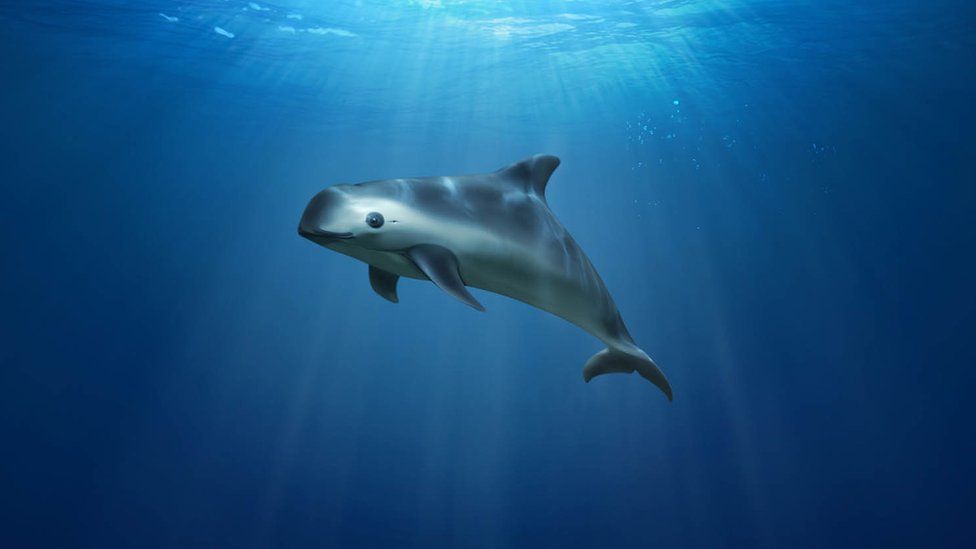
The vaquita marina is found only in Mexico. It is the most critically endangered sea mammal on the planet, its survival threatened by a deadly clash of interests between fishing and conservation. Scientists estimate there may be fewer than a dozen left in the wild.
Jacques Cousteau, the marine explorer, called the Sea of Cortéz, also known as the Gulf of California, "the world's aquarium".
One of its treasures is a silvery-coloured porpoise with wide, panda eyes. But the vaquita's days may be numbered because of illegal fishing for another protected species: totoaba.
Totoaba, a fish that can grow as large as a vaquita, was a food source before it was placed on Mexico's endangered list.
"We used to catch it in the 60s and 70s," remembers Ramón Franco Díaz, president of a fishing federation in the coastal town of San Felipe, on the peninsula of Baja California. "Then the Chinese came with their suitcases full of dollars, and bought our consciences."
They arrived wanting the totoaba's swim bladder, an organ that helps the fish stay buoyant. In China it is highly prized for its perceived - though unproven - medicinal properties.
According to the Earth League International NGO, 10-year-old dried swim bladders can sell for $85,000 (£60,000) a kilo in China. The fishermen of San Felipe make only a tiny fraction but in a poor community, business has boomed for the "cocaine of the sea".
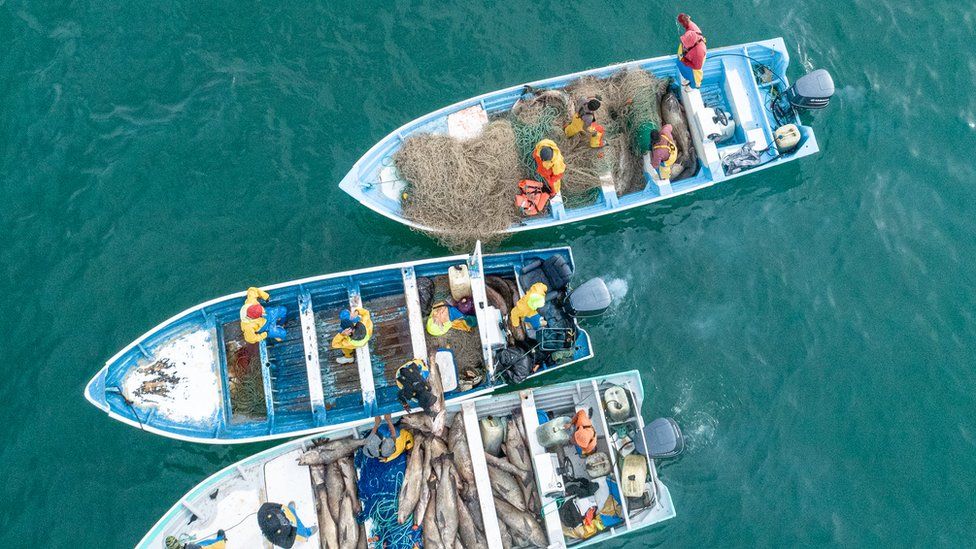
"The illegal fishermen - the criminal elements - are so strong that in the plain light of day you see them with their illegal nets and totoaba," says Mr Franco Díaz.
Every afternoon during the season, a stream of pick-up trucks towing fishing boats reverses down the concrete slipway of the town's public beach and into the sea. These craft are mostly unlicensed, and their crew use nets that can kill the vaquita.
"Gillnets might be hundreds of metres long and 10 metres high," says Valeria Towns, who works with a Mexican NGO, Museo de la Ballena. "They become a wall under water."
To protect the vaquita, all gillnets are banned in the upper Gulf. However, they are widely used, even by fishermen with permits for halibut or prawns. Mesh size varies with the catch, and the most perilous to the vaquita are gillnets with large mesh used for totoaba.
"It's not easy for marine mammals to free themselves from those - the vaquita get caught," says Ms Towns.
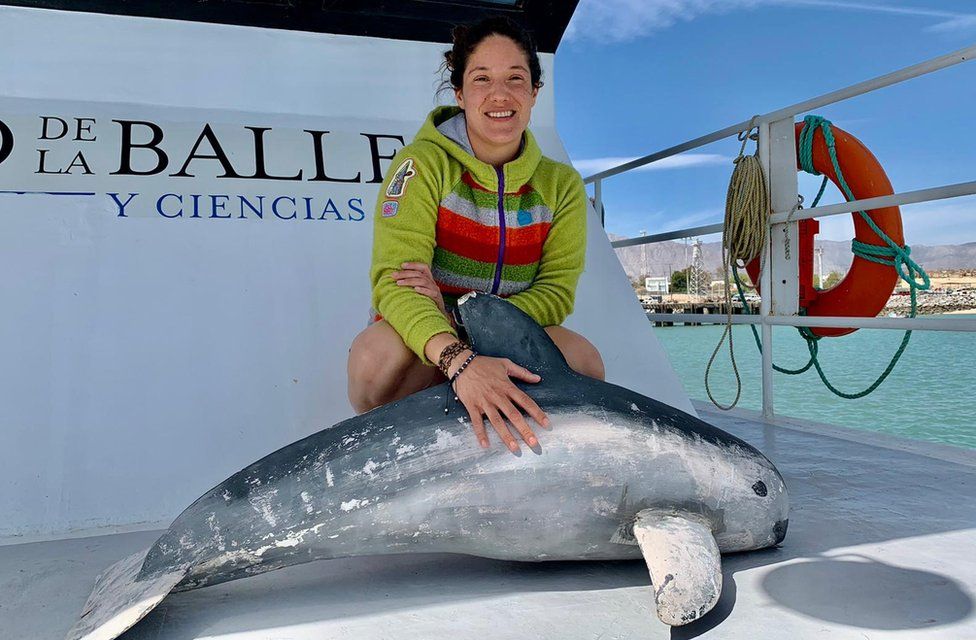
![]()
Off the coast of San Felipe, all commercial fishing is supposed to be prohibited inside the Vaquita Protection Refuge - an area larger than 1,800 sq km. Inside the refuge is a smaller zone of Zero Tolerance.
Museo de la Ballena supports a handful of fishermen interested in ending reliance on gillnets, and it sponsors alternatives to fishing like oyster cultivation. It is also one of the NGOs that removes gillnets from the protected area.
This is an activity that has escalated tensions between locals and conservationists.
[MAP HERE]
On 31 December 2020, one fisherman was fatally injured and another seriously hurt after their fishing boat collided with a larger ship belonging to the international NGO Sea Shepherd that was out taking up gillnets.
The facts are disputed, but the upshot was a riot in San Felipe where Museo's ship is moored.
"They were going to burn our boat," says Ms Towns who was at sea at the time, testing vaquita-friendly nets. "When I arrived back, other fishers that work with this alternative gear, they were protecting our boat, telling them [the rioters], 'This is not your enemy! Don't burn this boat'."
Museo's ship escaped with broken windows. The Mexican Navy was not so fortunate, one of its patrol boats was set alight in the port.
Now there is an uneasy truce. The Navy says it continues to patrol and remove nets from the Refuge. But there are few NGOs involved - Museo de la Ballena awaits permission to resume work, and the Sea Shepherd never returned to San Felipe after the incident.
Impunity and the absence of law enforcement may account for the dozens of totoaba launches leaving from San Felipe's beach and heading into the Refuge.
"Not a single authority stops them," says Ramón Franco Díaz. "If you dared approach them, they'd give you a bullet. Organised crime has stolen the Sea of Cortéz."
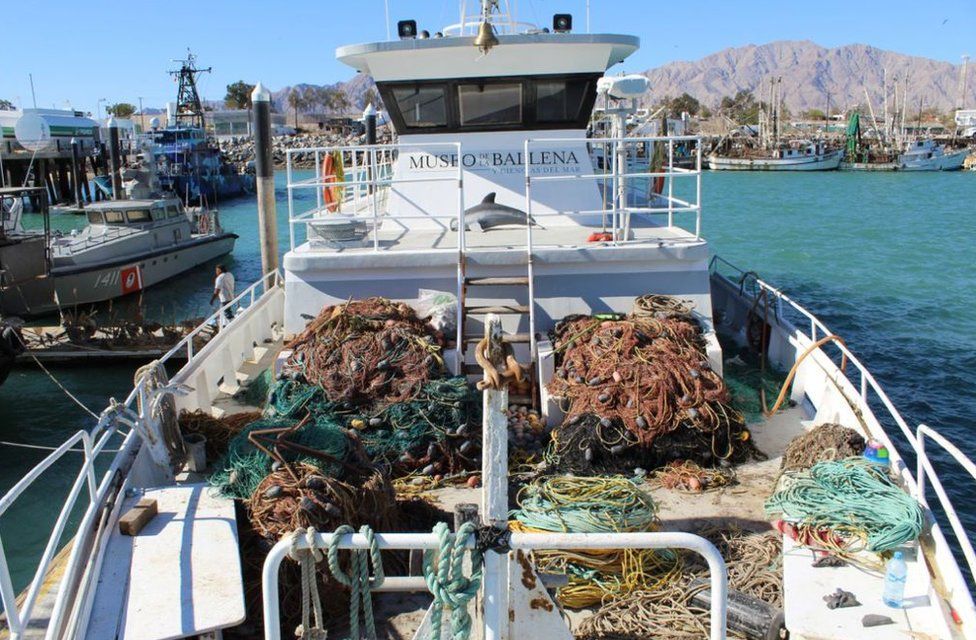
![]()
"Before you needed to watch the wind and the sea," says one former totoaba fisherman. "Now you see a lot of crazy people out there with guns."
The violent events of 31 December made international headlines, and brought San Felipe into the spotlight.
Now the Mexican government is considering proposals that might gratify the fishermen, but will anger conservationists worried about the vaquita's precarious fate.
One is to lift the totoaba's endangered species status. Another is to legalise the other fishing already happening in the Refuge.

"We want to establish different fishing zones for example, for Corvina and shrimp," says Iván Rico López from the government taskforce exploring sustainability in the upper Gulf.
"The Refuge is huge. If the ban on fishing was respected there, the fishermen just wouldn't eat. So we have to move towards legalising fishing."
The Mexican government has also distributed 3,000 "suripera", vaquita-safe nets. But fishermen complain these reduce their catch by 80%.
"We've got to look for ways to increase that," says Mr Rico López. "We're looking for alternatives, but we have to convince communities - if they're not involved in decision-making, we won't succeed."
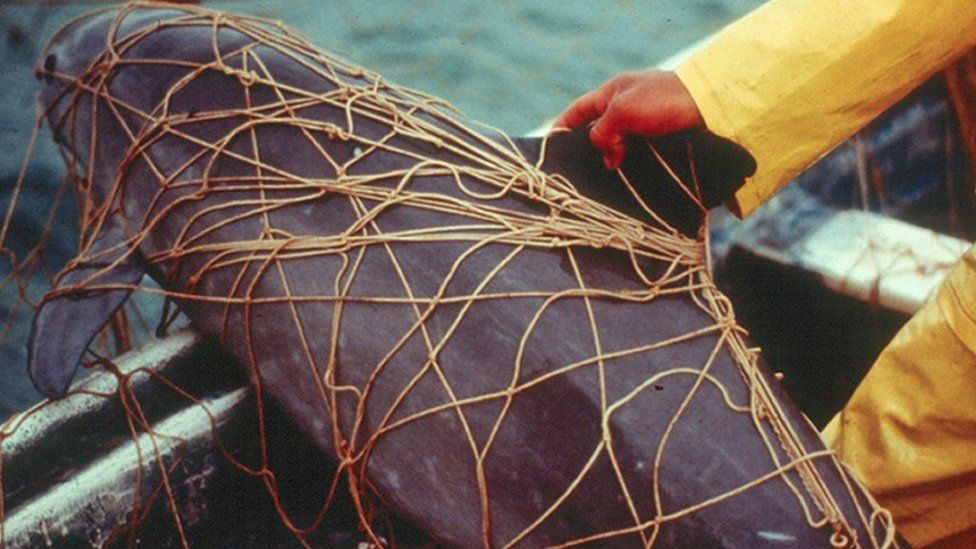
Is it possible to protect this precious mammal and ensure locals still make a living? In San Felipe the illicit trade in totoaba, the menacing involvement of organised crime, and little economic diversity create a toxic mix. There is also an entrenched traditional fishing culture.
Valeria Towns has a warning for San Felipe's fishing families who ignore the call to make changes to save the vaquita. "I don't think anyone would buy products from an area where people extinguished a species."
So after the free-for-all of this totoaba season, would she bet on the vaquita surviving till next year?
"Of course! There's always hope. If not, I wouldn't be here."
By accepting you will be accessing a service provided by a third-party external to https://oc3anclub.com/

